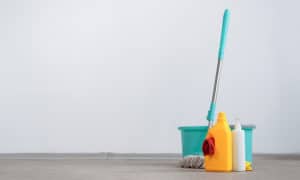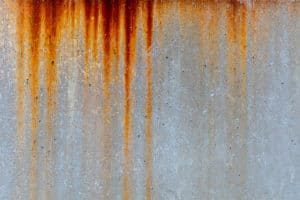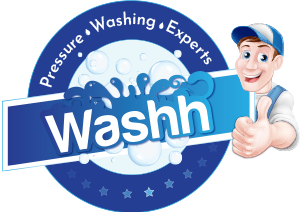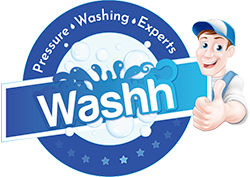Concrete is a popular material in many properties across the country. As a property owner, though, you must learn how to clean concrete so that it can remain in good condition for the longest possible time.
How to Clean Concrete Floors the Right Way
What is the best concrete cleaner? Although you might be looking for a one-size-fits-all solution to cleaning concrete, it is not quite that simple. The concrete cleaner and method you use will largely vary according to the type of finish on the concrete.
The good news, though, is that the overall process of how to clean concrete is rather quick and easy. Below, you will the ways on how to clean concrete floor depending on the exact material used it is made of:
Unsealed Concrete Floors
Unsealed concrete floors are made purely with pour concrete. That means it does not contain or did not go through any additional treatment. Without a finish, though, such floors are more vulnerable to staining due to the porous nature of the surface. This type of concrete flooring is typically used in outdoor areas.
Here are the instructions on how to clean unsealed concrete floors:
- Sweep off or vacuum up any loose dirt, dust, and debris from the concrete surface.
- Using a garden hose, wet the concrete. Then, apply a mixture of trisodium phosphate and water, scrubbing the solution onto the surface using a stiff-bristled broom.
- You can also use a pressure washer for this step.
- Rinse the concrete floor down with water.
- Then, allow the surface to dry completely.
After letting the floor air dry, you can then proceed to remove any stains on the unsealed surface. Different kinds of stains call for different methods of removal. For more information, refer to the “stain” section further down this article.
Sealed Concrete Floors
 Sealed concrete floors are finished with epoxies, acrylic resins, urethanes, or penetrating silicates. This allows the surface to become non-porous and resistant to stains. Because of this, cleaning sealed concrete is rather easy.
Sealed concrete floors are finished with epoxies, acrylic resins, urethanes, or penetrating silicates. This allows the surface to become non-porous and resistant to stains. Because of this, cleaning sealed concrete is rather easy.
Here are the instructions on how to clean sealed concrete floors:
- Sweep off or vacuum up any loose dirt, dust, and debris from the concrete surface.
- Combine two gallons of warm water with two teaspoons of dishwashing liquid.
- Avoid using a harsh cleaner as that can damage the sealant.
- Mop the floor with the dishwashing liquid solution.
- Mop the floor again with clean water to remove any residue from the solution.
- Allow the surface to dry completely.
If the sealant has dulled over time or due to harsh chemicals, ask your concrete floor installer to reseal the surface.
Polished Concrete Floors
Polished concrete floors boast a glossy finish, with the level of sheen chosen by the homeowner. If you want to take it one step further, you can stain the concrete to mimic granite or marble. This type of concrete flooring does not require recoating or waxing.
Here are the instructions on how to clean polished concrete floors:
- Using a dust mop or vacuum, remove any loose dirt, dust, and debris from the concrete surface.
- Mop the surface with a pH-neutral commercial polished concrete cleaner.
- You may or may not need to rinse with clean water afterward. Check the instructions at the back of your commercial cleaner.
Stained Concrete Floors
Stained concrete floors allow you to color the surface permanently. After that, you can seal the surface or leave it unsealed.
Here are the instructions on how to clean stained concrete floors:
- Clean the stained concrete surface using a dust mop or damp mop.
- Mop the surface with a mixture of a pH-neutral cleaner and water.
- Apply a sealer and a coat of wax every now and then to maintain the finish.
Painted Concrete Floors
Like stained concrete, painted concrete can be sealed or unsealed. The cleaning process is also similar, though the best concrete cleaner for this type of concrete is one that is not harsh.
Here are the instructions on how to clean painted concrete floors:
- Using a dust mop or vacuum, remove any loose dirt, dust, and debris from the concrete surface.
- Combine warm water with a non-abrasive all-purpose cleaner.
- Slightly dampen a microfiber mop with the cleaning solution. Mop the floors with it.
- Too much moisture can damage the paint and cause peeling.
- Mop the floor again with clean water to remove any residue from the solution.
- Allow the surface to dry completely.
Stamped Concrete Floors
This type of concrete goes through a treatment that makes it look like brick or stone. It can even mimic wood. Stamped concrete is also typically stained, but you can leave it unsealed or apply a sealer for better durability. Stamped concrete is also known as textured or imprinted concrete.
Here are the instructions on how to clean stamped concrete floors:
- Sweep off or vacuum up any loose dirt, dust, and debris from the concrete surface.
- Using a garden hose or pressure washer, wet the concrete.
- If indoors, you can use a mop and a bucket.
- Apply a small amount of dishwashing liquid to the surface area and scrub it down using a push broom.
- Rinse the concrete floor down with water to remove residue.
- Finally, allow the surface to dry completely.
How to Clean Concrete Floors Outdoors
Pressure washing concrete is, by far, the best way to clean exterior concrete floors. Given its durability, concrete can take a higher level of water pressure than other materials like vinyl or tile.
Of course, you might wonder, “How can I clean concrete without a pressure washer?” Pressure washers cut down on the time required to clean concrete. Additionally, they are more effective because they can blast away dirt and stains. But, if you don’t have a pressure washer or would prefer not to use one, you can clean exterior concrete as you would clean interior concrete.
How to Clean Concrete Patio
When it comes to concrete patio cleaning, you can use a handful of cleaning solutions. Can you use bleach to clean concrete? Cleaning concrete with bleach, water, and 1/8 cup of dishwashing liquid is an effective solution when it comes to mildly dirty patios.
Does white vinegar clean concrete? Cleaning concrete with vinegar is also good for mildly soiled (equal parts vinegar and water) or heavily soiled (full-strength vinegar) patios. Plus, it is eco-friendly.
Here are the steps you should take when cleaning concrete patios:
- Clear the patio of any furniture, plants, or other objects.
- Cover nearby plants or flowerbeds with a tarp to protect them.
- Sweep away any loose dirt, dust, and debris.
- Pull out any weeds (if any) between the cracks or along the edges.
- Apply a commercial or homemade concrete cleaner to the surface and scrub using a stiff nylon brush.
- Rinse away any residue with clean water using a pressure washer or garden hose.
- Allow the surface to dry completely.
- Apply a sealer to finish.
How to Clean Concrete Driveway
You may wonder, “What can I use to clean my concrete driveway?” Just like concrete patios, you can use a homemade bleach or vinegar solution. You can also use a mixture of water and trisodium phosphate, though it is more harmful to the environment. Other than that, you can use muriatic acid to clean concrete, but it is highly toxic. As such, when using muriatic acid, make sure to wear the proper protective gear.
Here are the steps you should take when cleaning concrete driveways:
- Sweep away any loose dirt, dust, and debris.
- Apply a commercial or homemade concrete cleaner to the surface and scrub using a stiff nylon brush.
- Alternatively, you can use a pressure washer to apply the cleaner and let it sit for 5 to 7 minutes.
- Rinse away any residue with clean water using a pressure washer or garden hose.
- Allow the surface to dry completely.
How Do You Remove Stains from Concrete?
The method you use to clean concrete will depend on the source of the stains. Staining that comes from food, for instance, will usually call for just dishwashing liquid. In contrast, tire marks may need something stronger.
Oil and Grease Stains
For fresh oil and grease stains, you can use cornstarch or dry kitty litter. Simply apply a layer of either of the two on the stained area. Then, allow it to sit for at least three days. This way, it has plenty of time to soak up the oil. After three days, vacuum or sweep away the cornstarch or kitty litter. Repeat if necessary.
If the grease stain has been there for a while, use a brush and a strong detergent to scrub away the stain. For faster and more effective results, use a concrete degreaser.
Tire Marks
For tire marks, wet the area first using a garden hose or pressure washer. Then, apply a concrete degreaser on the stained area. Let the degreaser sit for four hours before scrubbing it down with a stiff-bristled brush. Rinse away any residue and let it dry.
Mildew Stains
What chemical will clean concrete? If you have mildew stains, the best chemical to clean concrete is trisodium phosphate. Combine two tablespoons of the chemical with two tablespoons of powdered laundry detergent and one-quart water. Then, apply it to the stained area and scrub using a stiff brush. When dealing with stubborn mildew stains, you may need to use a mixture of water and chlorine bleach (one cup of bleach for every gallon of water).
Rust Stains
 For light rust stains, you can apply distilled white vinegar to the area and leave it for 30 minutes. Then, scrub it down with a stiff brush before rinsing it off with clean water. For heavier or darker rust stains, a commercial rust remover with oxalic acid is the best way to go.
For light rust stains, you can apply distilled white vinegar to the area and leave it for 30 minutes. Then, scrub it down with a stiff brush before rinsing it off with clean water. For heavier or darker rust stains, a commercial rust remover with oxalic acid is the best way to go.
Food and Beverage Stains
For stains brought on by food and drinks, you can use a simple solution of water and dishwashing liquid. Scrub this solution onto the stained surface using a stiff brush. Then, rinse the area well with clean water to get rid of any soapy residue.
Professional Concrete Pressure Washing vs DIY
A common question many property owners ask is whether to take a DIY approach or hire a professional service for concrete cleaning. You can achieve good results with a concrete cleaner, a brush, and a garden hose. But, a professional service can pressure wash concrete floors in half the time with better results, to boot.
It is also cheaper and better, in the long run, to hire a pressure washing company than to rent your own machine. This is because professionals have the necessary knowledge and experience required to safely clean all kinds of concrete. When you try to pressure wash concrete yourself, you run the risk of using too high a pressure level, which can lead to irreversible damage.
Proper Maintenance Goes a Long Way
Cleaning is a necessary step in maintaining concrete floors. When you know how to clean concrete the right way, you can extend the lifespan of the surface and make the most out of your investment.
Of course, you can always outsource the job to the professionals at Washh. Call us today at 704.321.8000 or contact us online to learn more about our concrete pressure washing services.
RELATED ARTICLES:
- A Beginner’s Guide On How To Pressure Wash A Driveway
- A Step-by-Step Guide On How To Clean Stucco
- How To Pressure Wash A Deck And Patio The Right Way


